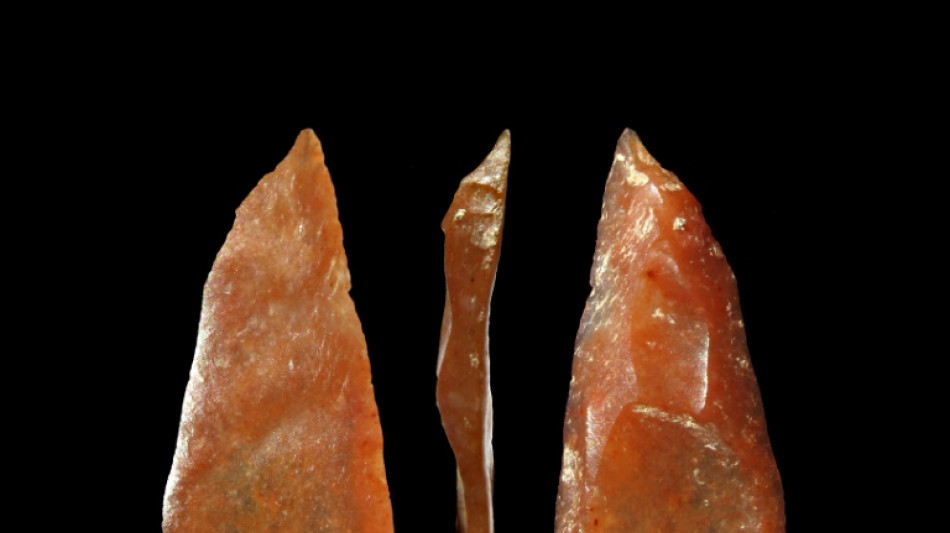
-
 Mbappe can be Real Madrid 'legend' like Ronaldo: Ancelotti
Mbappe can be Real Madrid 'legend' like Ronaldo: Ancelotti
-
Saka 'ready to go' for Arsenal after long injury lay-off: Arteta

-
 Aston Martin to sell stake in Formula One team
Aston Martin to sell stake in Formula One team
-
Three talking points ahead of clay-court season

-
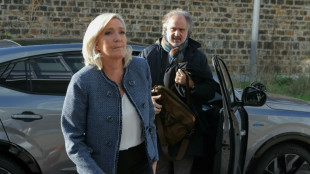 French court hands Le Pen five-year election ban
French court hands Le Pen five-year election ban
-
Probe accuses ex J-pop star Nakai of sexual assault

-
 Japan leads hefty global stock market losses on tariff woes
Japan leads hefty global stock market losses on tariff woes
-
Saka 'ready to go' after long injury lay-off: Arteta

-
 Ingebrigtsen Sr, on trial for abusing Olympic champion, says he was 'overly protective'
Ingebrigtsen Sr, on trial for abusing Olympic champion, says he was 'overly protective'
-
Tourists and locals enjoy 'ephemeral' Tokyo cherry blossoms

-
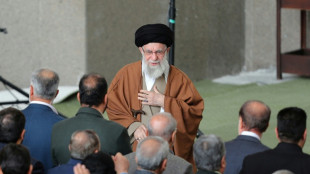 Khamenei warns of 'strong' response if Iran attacked
Khamenei warns of 'strong' response if Iran attacked
-
France fines Apple 150 million euros over privacy feature

-
 UK PM urges nations to smash migrant smuggling gangs 'once and for all'
UK PM urges nations to smash migrant smuggling gangs 'once and for all'
-
Thai authorities probe collapse at quake-hit construction site
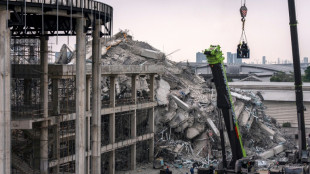
-
 France's Le Pen convicted in fake jobs trial
France's Le Pen convicted in fake jobs trial
-
Chinese tech giant Huawei says profits fell 28% last year

-
 Trump says confident of TikTok deal before deadline
Trump says confident of TikTok deal before deadline
-
Myanmar declares week of mourning as hopes fade for quake survivors

-
 Japan's Nikkei leads hefty market losses, gold hits record
Japan's Nikkei leads hefty market losses, gold hits record
-
Tears in Taiwan for relatives hit by Myanmar quake
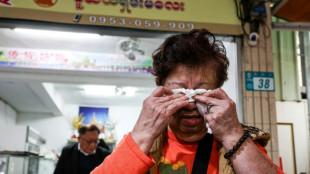
-
 Venezuela says US revoked transnational oil, gas company licenses
Venezuela says US revoked transnational oil, gas company licenses
-
'Devastated': Relatives await news from Bangkok building collapse
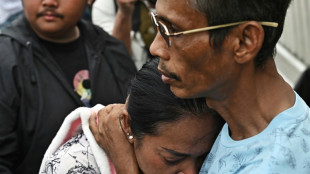
-
 Arsenal, Tottenham to play pre-season North London derby in Hong Kong
Arsenal, Tottenham to play pre-season North London derby in Hong Kong
-
Japan's Nikkei leads hefty equity market losses; gold hits record

-
 Israel's Netanyahu picks new security chief, defying legal challenge
Israel's Netanyahu picks new security chief, defying legal challenge
-
Trump says US tariffs to hit 'all countries'

-
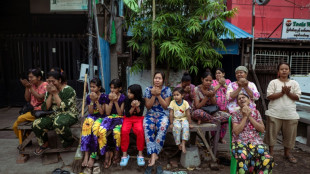 Prayers and tears for Eid in quake-hit Mandalay
Prayers and tears for Eid in quake-hit Mandalay
-
After flops, movie industry targets fresh start at CinemaCon

-
 Tsunoda targets podium finish in Japan after 'unreal' Red Bull move
Tsunoda targets podium finish in Japan after 'unreal' Red Bull move
-
French chefs await new Michelin guide

-
 UK imposes travel permit on Europeans from Wednesday
UK imposes travel permit on Europeans from Wednesday
-
At his academy, Romanian legend Hagi shapes future champions

-
 Referee's lunch break saved Miami winner Mensik from early exit
Referee's lunch break saved Miami winner Mensik from early exit
-
Djokovic refuses to discuss eye ailment after shock Miami loss

-
 Mitchell magic as Cavs bag 60th win, Pistons and T'Wolves brawl
Mitchell magic as Cavs bag 60th win, Pistons and T'Wolves brawl
-
Mensik shocks Djokovic to win Miami Open

-
 Duterte lawyer: 'compelling' grounds to throw case out
Duterte lawyer: 'compelling' grounds to throw case out
-
What happens on Trump's 'Liberation Day' and beyond?

-
 Clock ticks on Trump's reciprocal tariffs as countries seek reprieve
Clock ticks on Trump's reciprocal tariffs as countries seek reprieve
-
Japan-Australia flagship hydrogen project stumbles

-
 Musk deploys wealth in bid to swing Wisconsin court vote
Musk deploys wealth in bid to swing Wisconsin court vote
-
Mensik upsets Djokovic to win Miami Open

-
 China manufacturing activity grows at highest rate in a year
China manufacturing activity grows at highest rate in a year
-
'Waited for death': Ex-detainees recount horrors of Sudan's RSF prisons

-
 Japan's Nikkei leads big losses in Asian markets as gold hits record
Japan's Nikkei leads big losses in Asian markets as gold hits record
-
Rescue hopes fading three days after deadly Myanmar quake

-
 'Basketbrawl' as seven ejected in Pistons-Wolves clash
'Basketbrawl' as seven ejected in Pistons-Wolves clash
-
Four men loom large in Microsoft history

-
 Computer pioneer Microsoft turns 50 in the age of AI
Computer pioneer Microsoft turns 50 in the age of AI
-
Trump calls out both Putin and Zelensky over ceasefire talks


Study places Homo sapiens in Europe earlier than thought
Homo sapiens ventured into Neanderthal territory in Europe much earlier than previously thought, according to an archaeological study published in Science magazine on Wednesday.
Up to now, archaeological discoveries had indicated that Neanderthals disappeared from the European continent about 40,000 years ago, shortly after the arrival of their "cousin" Homo sapiens, barely 5,000years earlier and there was no evidence of an encounter between these two groups.
The new discovery, by a team of archaeologists and palaeoanthropologists led by Ludovic Slimak of Toulouse University, pushes back the arrival of Homo sapiens in Western Europe to around 54,000 years ago.
Another remarkable finding of the research is that the two types of humans alternated in inhabiting the Mandrin cave in what is now the Rhone region of southern france.
The Mandrin site, first excavated in 1990, includes layer upon layer of archaeological remains dating back over 80,000 years.
"Mandrin is like a kind of neandertalian Pompeii, without catastrophic events, but with continuous filling of sands in the cave deposited progressively by a strong wind, the Mistral," Slimak told AFP.
His team uncoevered a layer, known as the "E layer", containing at least 1,500 cut flint points, more finely executed than the points and blades in the layers above and below.
Very small in size, some of them less than a centimetre in length, these points "are standardised, to the nearest millimetre, something we haven't seen at all with Neanderthals," said Slimak, a specialist in Neanderthal societies.
These, he explained, were probably arrowheads, unknown in Europe at that time.
He attributes this production to a culture called Neronian, linked to several sites in the Rhone area.
- Milk tooth discovery -
In 2016, Slimak and his team visited the Peabody Museum in Harvard to compare their discoveries with a collection of carved fossils from the Ksar Akil site at the foot of Mount Lebanon, one of the major sites of the expansion of Homo sapiens to the east of the Mediterranean.
The similarity between the techniques used convinced Slimak that the findings at the Mandrin site were the first traces of Home Sapiens found in Europe.
A milk tooth found in the "E layer" confirmed his suspicions.
In all researchers found nine teeth at the Mandrin cave site, belonging to six individuals.
These ancient teeth were entrusted to Clement Zanolli, a palaeoanthropologist at the University of Bordeaux.
Using microtomography, similar to medical scanning technology, the verdict was clear.
The milk tooth from the "E" layer" was the only modern human tooth found at the site.
That "fossil molar from a modern human child provides the earliest known evidence of modern humans in western Europe", the Natural History Museum in London said in a statement.
- Co-existence? -
The archaeological team then used a pioneering technique, fuliginochronology, which analyses layers of soot impregnating the walls of a cave and the traces of ancient fires.
The reachers demonstrated that "this Modern human population occupied this Rhone territory for some 40 years," said Slimak.
At some point, the two populations either co-existed in the cave or on the same territory, the researcher concluded.
He imagines that Neanderthals could have served as guides to Homo Sapiens to lead him to the best sources of flint available, some of which were located up to 90 kilometres (55 miles away.
"Nothing new under the sun… This is precisely what happened when Europeans began the colonization of the Americas or Australia," he noted.
"The findings from Mandrin are really exciting and are another piece in the puzzle of how and when modern humans arrived in Europe,? concludes Professor Chris Stringer, co-author of the study and a specialist in human evolution at the Natural History Museum in London.
"Understanding more about the overlap between modern humans and other hominins in Eurasia is vital to understanding more about their interactions, and how we became the last remaining human species," he added.
This overlap, which was evident in Mandrin, now places the Rhone region as a "major migration corridor (for Homo sapiens) enabling them to reach the Mediterranean and continental European areas", said Slimak, who promises more discoveries from the Mandrin site.
D.Kaufman--AMWN
